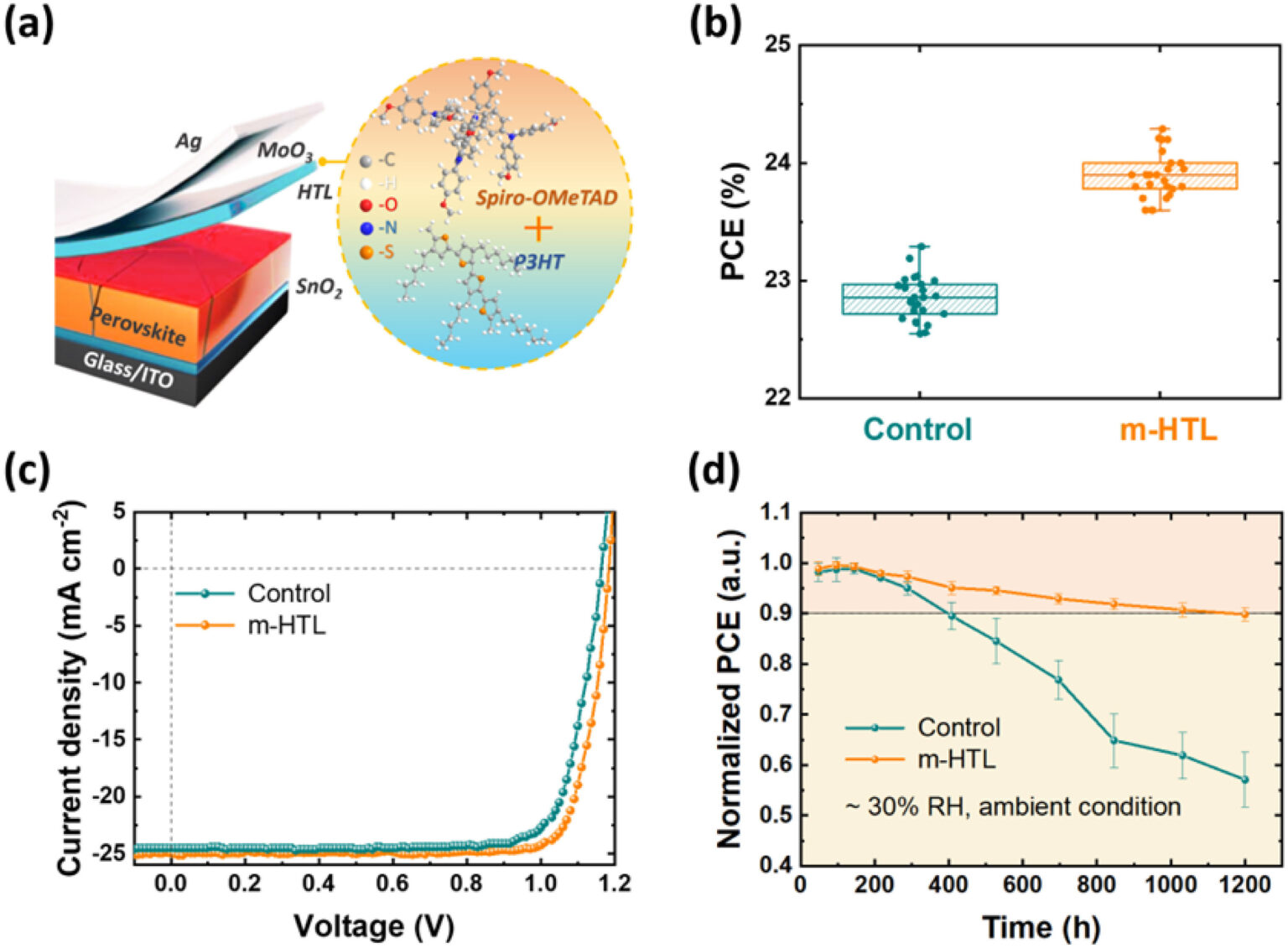Researchers in China have built a hole transport layer with a mixed binary configuration integrating the polymer Regioregular poly(3-hexylthiophene) (P3HT) and Spiro-OMeTAD. They used it to build a perovskite solar cell that was able to retain 90% of its initial efficiency after 1,200 hours of storage in dark ambient environment.

Schematic illustration of the planar structure of n-i-p perovskite solar cell
Image: Chinese Academy of Sciences, DeCarbon, Creative Commons License CC BY 4.0
The champion device achieved a power conversion efficiency of 24.30% and a certified efficiency of 24.22%. It also achieved an open-circuit voltage of 1.18 V, a short-circuit current density of 24.94 mA cm-2, and a fill factor of 82.51%. The cell was also able to retain 90% of its initial efficiency after 1,200 hours of storage in dark ambient environment.
“A successful modification of the conventional Spiro-OMeTAD HTL has been demonstrated by incorporating hydrophobic polymeric P3HT into Spiro-OMeTAD film to improve the efficiency and stability of perovskite solar cells,” the group concluded. “We believe that this strategy will pave the way on the development of low-cost, efficient and stable perovskite solar cells.”
The scientists presented their findings in the study “Binary Hole Transport Layer Enables Stable Perovskite Solar Cells with PCE Exceeding 24%,” which was recently published in DeCarbon.
